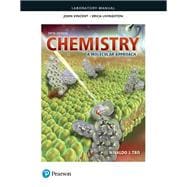For courses in Chemistry Laboratory.
With a focus on real-world applications and a conversational tone, this laboratory manual contains experiments written specifically to correspond with Chemistry: A Molecular Approach, 5th Edition by Nivaldo J. Tro. Each experiment covers one or more topics discussed within a chapter of the textbook, with the dual goal of 1) helping students understand the underlying concepts covered in the lecture, and 2) presenting this material in a way that is interesting and exciting.
Updated for the new edition of Chemistry: A Molecular Approach, this manual contains twenty-nine experiments with a focus on real world applications. Each experiment contains a set of pre-laboratory questions, an introduction, a step-by-step procedure (including safety information and a report section featuring post-laboratory questions). Additional features include a section on laboratory safety rules, an overview on general techniques and equipment, as well as a detailed tutorial on graphing data in Excel.








